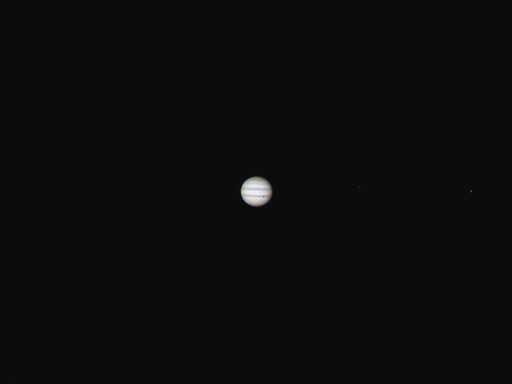
Telescope: Unitron 510 5” f/16 refractor, Atlas EQ-G
Camera: Canon EOS Ra full frame DSLR
Filter: 2” Baader Fringe Killer (Minus Violet)
Exposure: 450 (of 500)x1/160sec, ISO 1600, 5x movie mode, saved as AVI
Average Light Pollution: Bortle 8, very poor transparency, haze, fog
Lensed Sky Quality Meter: 18.1 mag/arc-sec^2
Seeing: 3/5
White Balance: Nebulosity Automatic
Software: Backyard EOS, Autostakkert, Registax, Nebulosity, Photoshop
After a long night of imaging I decided to take a quick peek at Jupiter. It looks so nice I grabbed a short AVI using Backyard EOS’s 5x movie mode. Europa and Ganymede are to the right, Io and it’s shadow are in transit. You can spot Io is a tiny bright spot adjacent to the southern equatorial belt just to the left of center. (Callisto is just out of the field to the left.) The Great Red Spot is just starting to peek around the limb on the left edge of the southern equatorial belt. I was surprised at how well this turned out and it will be interesting to try this again using a real planetary imaging camera.
Jupiter currently rises around midnight and is high in the east at dawn. (Photo credit: John Graham, 8-19-2023)
Recent Comments